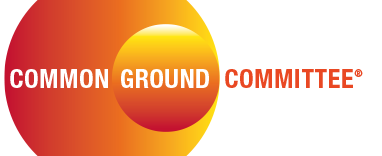An Introduction to Fake News
Fake news is often cited as a key driver of polarization in the U.S. But what exactly does it mean when people cry “fake news?” The following post, which is part one of a series, digs deeper to help you navigate an increasingly confusing array of information.
So, what is fake news? It is a term used by both sides of the political spectrum to cast doubt on information being presented as fact, ranging from a biased and disparaging version of events to more technologically complex deep fakes, a science of falsifying images and audio to make something that never happened appear real.
Cornell defines fake news as “fabricated information that mimics news media content in form but not in organizational process or intent. Fake news outlets, in turn, lack the news media’s editorial norms and processes for ensuring the accuracy and credibility of information. Fake news overlaps with other information disorders, such as misinformation (false or misleading information) and disinformation (false information that is purposely spread to deceive people).”
Fake news is a significant contributing factor in the increasing spread of polarization in the US. But when we refer to “fake news,” what exactly do we mean?
What is fake news?
In very general terms, fake news can be defined as false or misleading information presented as news. That said, by digging a little deeper you can find more than one definition. According to this white paper published by Simmons University and The Institute of Museum and Library Services, fake news has traditionally been “limited to falsified news stories… fake news outlets that present themselves as legitimate, often by mirroring real news outlets and even adopting names and URLs that integrate parts of the real outlet.”
However, as times change so has the real scope of fake news. Fake news can now be broken down into two categories: misinformation and disinformation. Misinformation is defined as inaccurate information that is generated without the intention to deceive; whereas disinformation (or propaganda) is defined as false or misleading information constructed knowingly and disseminated with intent to deceive.
Perhaps the most insidious is the deep fakes, which take advantage of a machine learning technique called a “generative adversarial network,” or a GAN, invented in 2014 as a way to algorithmically generate new types of data out of existing data sets. A GAN can look at thousands of photos and then produce a new one that is like an amalgamation of those photos, like an entirely new image of a politician. The multi-use technology can also be used to generate new audio from existing audio, making it seem as if a public figure has said or done something they never did.
The Impact of social media
Misinformation and disinformation are not new by any means, but with the introduction of social media, the pace of viewing and sharing has increased exponentially. We are now exposed to this false information daily, and in a time of increasingly sophisticated technology, it can be hard to differentiate between legitimate news, distortions, and outright fabrications. Often this falsified information garners inflammatory responses from both sides of the aisle (and all sectors of the population) and can influence decision-making.
Who is responsible for fake news?
The short and simple answer is — anyone who has the means and motivation to create and post mis- or disinformation. As the movement away from local news continues, a new market for entertainment news is expanding. This confluence of events has opened the market for unreliable news sources and social media has given it a platform to thrive. These days, fake news can be spread by big players with large social media followings (e.g., celebrities, politicians, influencers, etc.), and social media algorithms reward more inflammatory posts by cycling them more frequently and prominently.
But it’s not just the big players who are responsible for spreading fake news. Anyone can be responsible for the spread of illegitimate news and posts, and everyone who hits “share” or “send” on social media platforms contributes to the whiplash.
What makes matters so difficult is determining the difference between the gradations of fakery. Snopes.com has been dedicated to debunking outright false viral claims since the 90s. But these days, we’re dealing with new levels of falsehoods.
“The fictions and fabrications that comprise fake news are but a subset of the larger bad news phenomenon,” Snopes founder David Mikkelson wrote on his site last November, “which also encompasses many forms of shoddy, unresearched, error-filled, and deliberately misleading reporting that do a disservice to everyone.”
In our next post on this topic, we will dive into how to spot the difference between falsehoods, which in the early days of Snopes were nicknamed urban myths, and bad news.
Until then, you can learn more about the media’s role in moving forward through information and misinformation by watching our fascinating 2020 conversation with Fox News Sunday host Chris Wallace and New York Times correspondent Maggie Haberman, in partnership with the Columbia University Graduate School of Journalism.
View the event as well as highlight videos: Wallace & Maggie Haberman Talk Fake News & The Media (commongroundcommittee.org)





